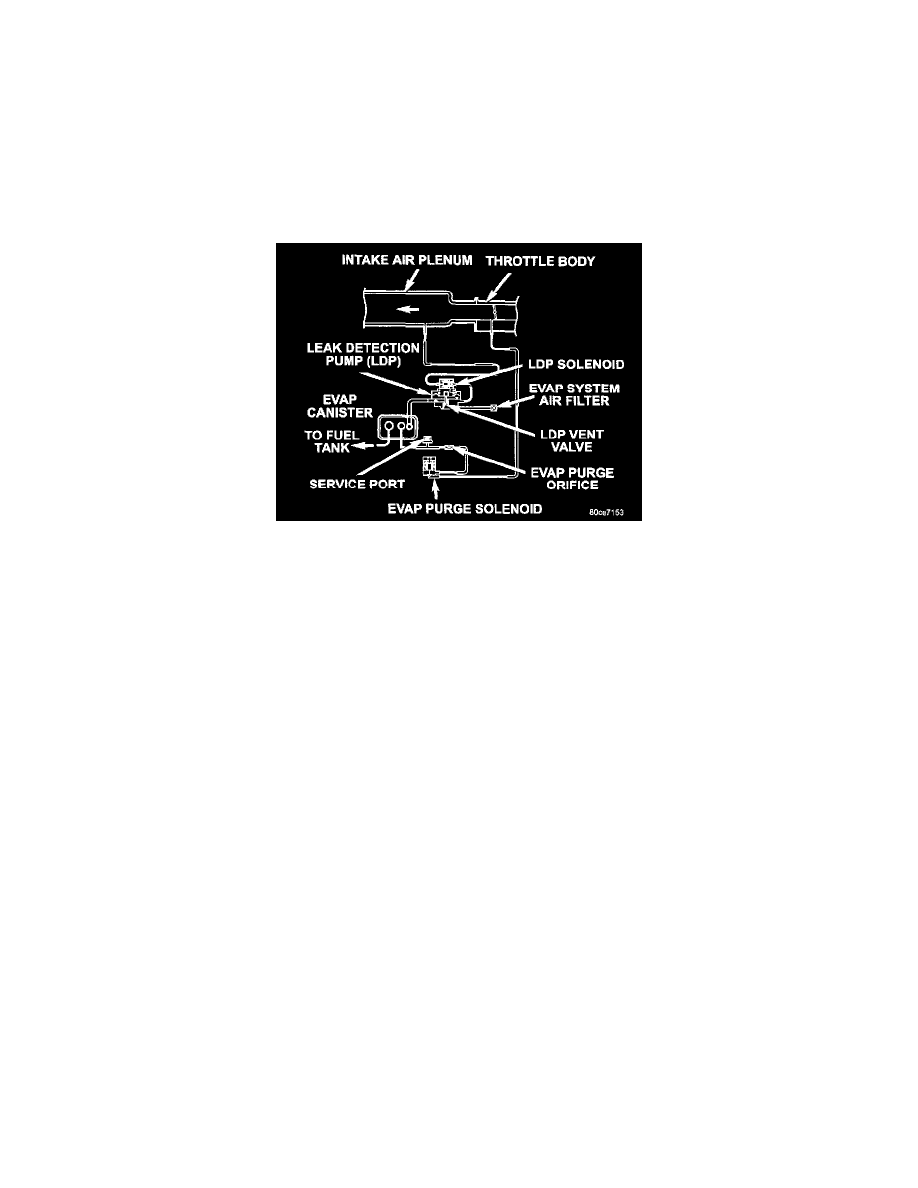Dakota Quad Cab 2WD V8-5.9L VIN Z LDC (2002)

Leak Detection Pump: Testing and Inspection
LEAK DETECTION PUMP
Leak Detection Pump Operation
The evaporative emission system is designed to prevent the escape of fuel vapors from the fuel system. Leaks in the system, even small ones, can
allow fuel vapors to escape into the atmosphere. Government regulations require on-board testing to make sure that the evaporative (EVAP)
system is functioning properly. The leak detection system test for EVAP system leaks and blockage. It also performs self-diagnostics. During
self-diagnostics, the Powertrain Control Module (PCM) first checks the Leak Detection Pump (LDP) for electrical and mechanical faults. If the
first checks pass, the PCM then uses the LDP to seal the vent valve and pump air into the system to pressurize it. If a leak is present, the PCM will
continue pumping the LDP to replace the air that leaks out. The PCM determines the size of the leak based on how fast/long it must pump the LDP
as it tries to maintain pressure in the system.
EVAP Leak Detection System Components
Service Port: Used with special tools like the Miller Evaporative Emissions Leak Detector (EELD) to test for leaks in the system.
EVAP Purge Solenoid: The PCM uses the EVAP purge solenoid to control purging of excess fuel vapors stored in the EVAP canister. It remains
closed during leak testing to prevent loss of pressure.
EVAP Canister: The EVAP canister stores fuel vapors from the fuel tank for purging.
EVAP Purge Orifice: Limits purge volume.
EVAP System Air Filter: Provides air to the LDP for pressurizing the system. It filters out dirt while allowing a vent to atmosphere for the EVAP
system.
Leak Detection Pump (LDP) Components
The main purpose of the LDP is to pressurize the fuel system for leak checking. It closes the EVAP system vent to atmospheric pressure so the
system can be pressurized for leak testing. The diaphragm is powered by engine vacuum. It pumps air into the EVAP system to develop a pressure
of about 7.5" HO (1/4) psi. A reed switch in the LDP allows the PCM to monitor the position of the LDP diaphragm. The PCM uses the reed
switch input to monitor how fast the LDP is pumping air into the EVAP system. This allows detection of leaks and blockage.
